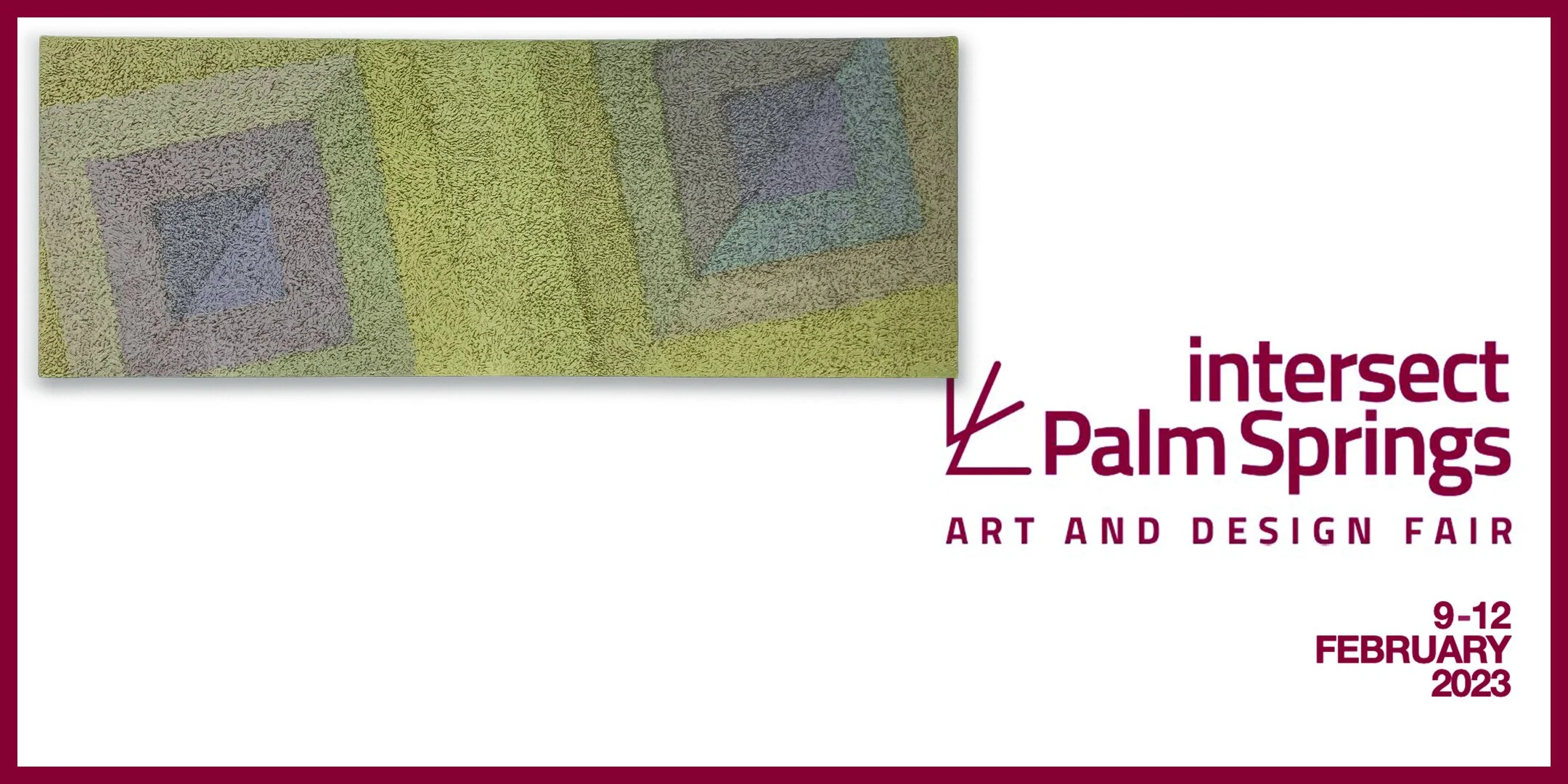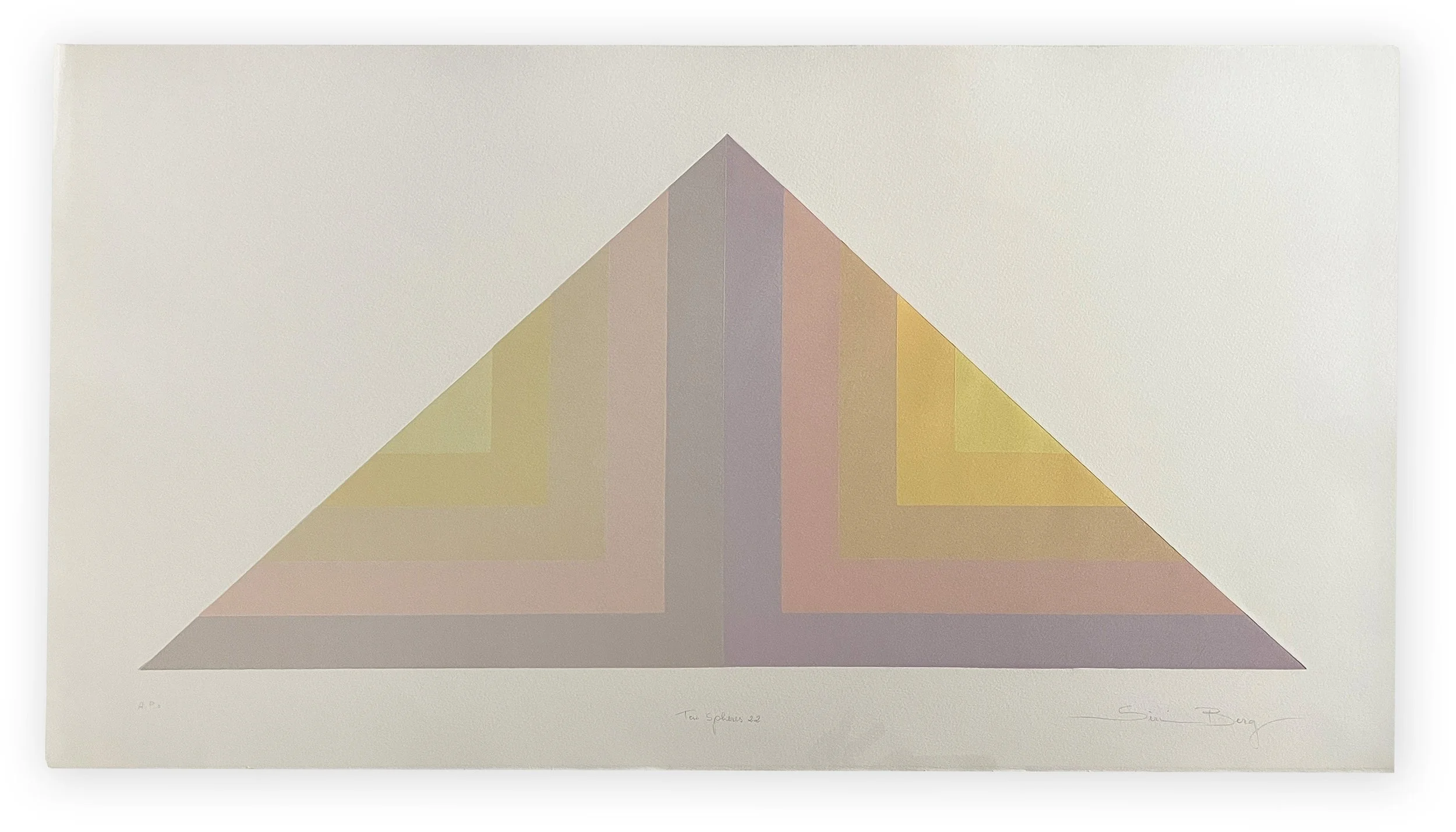Art Fair: Siri Berg at Intersect Palm Springs, 2023
Palm Springs Convention Center, Palm Springs
Booth #119
February 9-12, 2023
––––––––––
Artist Estate Studio makes its art fair debut!
As an agency tasked to steward the legacy of artists, Artist Estate Studio brings an all-women presentation to Palm Springs.
This installment offers a multi-narrative rethinking of the art historical canon by exhibiting the work of five women artists including: the color-theories-made-personal in the works by Swedish-American painter Siri Berg (1921-2020); the lyrical paintings of Chinese-American painter Mimi Chen Ting (1946-2022); the bucolic abstractions of Judith Dolnick (b.1934); the fractured mosaic-like painted panels that capture ancient architecture by Hermine Ford (b.1939); the stark and strictly black and white oil-stick paintings by Joan Witek (b.1943); and the colorful tectonic mixed-media ceramics of Adirondack based sculptor Ali Della Bitta (b.1981). Grounding this selection are important prints by Joan Mitchell and Elizabeth Murray.
Of the artists presented, many have rarely, if ever, exhibited on the West Coast.
Dates and Times:
Opening Night Preview!
Thursday, February 9 | 5 - 8 pm (VIP/All Access Pass only)
General Admission:
Friday, February 10 | 11 am - 6 pm
Saturday, February 11 | 11 am - 5 pm
Sunday, February 12 | 11 am - 3 pm (10 - 11 am VIP hour)
Siri Berg (1921-2020) “Kabbalah,” 1984-85, oil on canvas, 35 x 95 in (88.9 x 241.3 cm)
“Ten Spheres.23E (Kabbalah Series),” 1986, Monoprint, 18 x 31 in (45.7 x 78.7 cm)
“Ten Spheres.22 (Kabbalah Series),” 1986, Monoprint, 18 x 31 in (45.7 x 78.7 cm)
Siri Berg (1921-2020) was a native of Stockholm, Sweden. While attending the German Gymnasium and Victoria College in Prague she took life drawing classes at the Rotter-Schule für Werbegrafik. She then entered The Institute of Art and Architecture at the University of Brussels before immigrating to the United States at the age of 19. Siri worked briefly in interior design until she began pursuing her true passion—painting and color.
In the early 1980s, Siri Berg concentrated on the subject of the The Ten Sefirot of the Kabbalah—the attributes in Kabbalah through which The Infinite is revealed to create both the physical realm and the chain of higher metaphysical realms. Reinterpreting this subject of Jewish mysticism, Siri used color, value, and design to express an ascending and descending order through value gradations from dark to light as a way to “resolve opposing aspects of life as they relate to abstract art.”
Referencing the tradition of abstract geometric painting, specifically Johannes Itten (1888-1967) and Josef Albers (1888-1976) and also Mary Gartside (1755-1819) and Emily Noyes Vanderpoel (1842-1939), Berg’s work is noted for its purity. In her Kabbalah Series she explored, through progressions and variation, the systematic evolution of a theme.Berg’s work is noted for its purity. In her Kabbalah Series she explored, through progressions and variation, the systematic evolution of a theme.
Major monographic exhibitions include Swedish Embassy, Washington, DC (2019); The Bonniers Konsthall Museum, Stockholm (2018); Shirley Fiterman Art Center, New York (2016); The Painting Center, New York (2012); The William Whipple Art Museum at Southwest Minnesota State University, Marshall (2008); Gibson Gallery Museum at SUNY Potsdam (2006); Swedish American Museum, Chicago (2003); The Robert C. Williams American Museum, Atlanta (1997); The Yeshiva University Museum, New York (1991); The American Swedish Museum, Philadelphia (1986, 1999); Prominent public collections include The Solomon R. Guggenheim Museum, New York; Southwest Minnesota State University Art Museum MN; New York University, New York; Gray Art Gallery, NYU, New York; Moderna Museet (Museum of Modern Art), Stockholm, Sweden; The Swedish Ambassador’s Residence in Washington D.C. among others.




